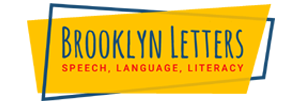CONSONANTS AND CONSONANT SOUNDS IN ENGLISH

Did you know that there are 44 phonemes in English? This means that there are 44 distinct spoken sounds in the English language compared to 26 letter sounds produced in print and 250 graphemes in English. In the orchestra of language, consonants form the backbone, providing structure, clarity, and diversity to our speech.
Unlike vowels, which resonate freely, consonants involve varying degrees of obstruction or constriction in the vocal tract, such as the oral and nasal cavity, pharynx, and larynx. These sounds are created by controlling the airflow as it passes through the mouth, nose, or both.
The 24 Consonant Speech Sounds
Our linguistic palette comprises 24 consonant sounds, each contributing uniquely to our ability to articulate words and convey meaning. These sounds are classified into different categories based on their manner and place of articulation.
1. Place of Articulation: Consonants are articulated at different points in the vocal tract. They can be produced at the lips (labial), between the teeth (interdental), on the alveolar ridge (alveolar), at the hard palate (palatal), at the velum (velar), or deep in the throat (glottal).
2. Manner of Articulation: The manner in which airflow is obstructed or modified distinguishes various consonant sounds. This includes stops (complete closure then release), fricatives (narrowing of the airflow creating friction), affricates (combination of stop and fricative), nasals (airflow through the nose), liquids (smooth airflow around the sides of the tongue), and glides (smooth movement of the tongue).
Exploring the Diversity
Let’s take a closer look at this diverse consonantal landscape. Children go through 4 stages in English speech sound acquisition, where they begin to combine words to form simple sentences.
- Stops include sounds like /p/, /b/, /t/, /d/, /k/, /g/, and /uh/, where the airflow is completely stopped and released.
- Nasals:These sounds, like /m/, /n/, and /ng/, allow airflow through the nose, such as in “met” or “sing.”
- Fricatives: Sounds like /f/, /v/, /th/, /s/, /z/, /sh/, /h/, and “dge” involve a partial obstruction creating friction, as in “fan” or “van.”
- Affricates: The sounds /ch/ (as in “chair”) and /j/ (as in “jane”) combine the features of stops and fricatives.
- Approximant/Glides: Sounds like /y/ (as in “yak”) and /w/ (as in “wet”) involve smooth movements of the tongue.
- Lateral: /l/ and /r/ are laterals where the tongue allows airflow around its sides, contributing to sounds like “leg” or “rat.”

Cultural and Linguistic Influence
The perception and production of these consonant sounds vary across languages and cultures. Some languages may lack certain consonants, while others might have additional sounds not present in English. For instance, the distinct retroflex sounds found in languages like Mandarin or Hindi differ significantly from English articulation.
Impact of Consonant Sounds on Communication and Learning
Mastery of consonants is crucial for effective communication. Pronunciation can greatly influence meaning; a slight alteration in a consonant sound can change the entire context of a word. For language learners, understanding these sounds is key to achieving fluency and clarity in speech.
Conclusion
Consonants, with their diverse articulation and role in language, enrich our ability to communicate. Their variations across languages and their impact on speech underscore their importance in our linguistic landscape. Understanding and mastering these 24 consonant sounds unlock the door to clearer, more expressive communication, reflecting the beauty and complexity of human language.
Check Out:
- Speech intelligibility from 18month-4 years of age.
- Everything you want to know about treatment approaches for speech sound disorders.
FREE CONSULTATION!!!
Call: (347) 394-3485,
Text: (917) 426-8880
Email: [email protected]
(we respond to email right away!)
Craig Selinger
Latest posts by Craig Selinger (see all)
- How to Become a Speech Therapist in New York - April 28, 2024
- NYC Middle School Transition Support Group - April 7, 2024
- Understanding Toddler Neurodevelopmental Evaluation - April 3, 2024

